fxdltc88
758 posts
Just a little collection. of images celebrating the mitten state and the Great Lakes region.
Don't wanna be here? Send us removal request.
Text
White Hurricane of November 1913 was the Great Lakes' worst disaster

More than a century after a violent force was unleashed across the Great Lakes, the details of the devastation are still staggering: At least 250 sailors lost, a dozen ships sunk, and 30 vessels left stranded or smashed against rocky shorelines from Lake Superior to Lake Erie.
The Great Storm of 1913 was easily the region’s largest natural disaster ever.
It was four days of chaos that packed blizzard conditions as well as hurricane-force winds. Fast-moving “trains” of huge waves - some topping 30 feet high - lashed ships making their late-season runs.
A TALE OF TWO STORMS
If you were on a ship out on the lakes, caught in this unexpected storm, it became something out of nightmare. Mariners reported winds gusting to 100 mph in some spots, amid monster 36-foot waves.
The storm has been given several monikers over the years, including the “White Hurricane,” the “Frozen Fury,” and the “Big Blow.”
But really, it was two storm systems colliding to produce what forecasters now call a “meteorological bomb” that exploded over the Great Lakes from Nov. 7-10 in 1913.
Lake Huron saw the worst of this hellish storm, with eight ships going under and 187 lives lost during one violent, six-hour window.
There were some bright spots, like the dramatic rescue of a shipwrecked crew in Lake Superior who had to ride out the storm for 90 hours as their ship became entombed in ice.
For the storm’s centennial in 2013, the National Weather Service (NWS) in Detroit put together a retrospective, recreating the storm’s conditions with today’s modern forecasting technology.
They compared this modern model with witness accounts from 1913 - and found the old-time sailors were not exaggerating the strange violence of this storm for the ages.

TWO STORMS COLLIDING
This image from the National Weather Service shows two storm tracks converging to become a November gale. This type of collision course caused the White Hurricane over the Great Lakes in 1913, as well as the fierce “November Witch” storm that sank the Edmund Fitzgerald in 1975.
A “PRE-STORM,” THEN A “WHITE HURRICANE”
The first phase of the 1913 storm, which meteorologists call the “Pre-Storm,” primarily affected Lake Superior and Lake Michigan beginning on Nov. 7.
“The Pre-Storm was formidable in its own right, with storm-force winds, heavy snow, lake-effect snow squalls, freezing sprays and high seas,” the NWS said. “Several large ships were severely damaged and run aground across the breadth of the lake.”
The second phase, called the “White Hurricane,” kicked in on Nov. 9, which became the storm’s deadliest day, especially for sailors on Lake Huron who were busy ferrying grain and iron ore to ports before winter ended the shipping season.
This was caused by an “unusual atmospheric phasing” of the Pre-Storm to the north and another storm system that was developing over the southeast U.S.
“The resultant ‘meteorological bomb’ over the eastern Great Lakes would produce prolonged, hurricane-force winds, blinding snow squalls, freezing spray and massive wave trains over the Great Lakes.
“The ‘White Hurricane’ was the deadliest and most intense phase of the Great Storm of 1913.”

AT LEAST A DOZEN SHIPS LOST, 250 SAILORS AND CREW
In 1913, the weather warning system across the Great Lakes was so much different than today’s instantaneous sharing of information. Gale Warnings were sent by telegram in those days, reaching more than 100 Weather Bureau stations along the shorelines. Once a warning was received, a volunteer would hoist a flag or put out a lantern to warn passing sailors of poor conditions.
“These warnings were typically hoisted 12 to 24 hours in advance of a storm,” NWS staff said. “For sailors leaving port, there was no means of knowing the character of an approaching storm, and vessels beyond the sight of land were unable to obtain any information. In the case of the White Hurricane, Weather Bureau forecasters issued gale warnings on November 7. However, even the forecasters were caught by surprise by the strength and longevity of the powerful storm.”

The NWS simulation of the 1913 storm matched witness accounts:
“By 10 p.m. Sunday (Nov. 9, 1913), hurricane force gusts are projected over most of Lake Huron with maximum winds likely 80 to 90 mph. Sustained winds are likely approaching 60 mph throughout the evening hours.”
“Peak wind gusts measured at Detroit (60 mph) and Port Huron (67 mph) occurred around 8 p.m. Nov. 9th. Many boats on Lake Huron sank within a few hours of this time.”
From the NWS simulation for Nov. 10, 1913:
“By 7 a.m. Monday, the low is still over SW Ontario. Widespread hurricane force wind gusts are projected over eastern Lake Superior and northern Lake Michigan. The simulation predicted gusts 80 mph+ in central Lake Superior. ”



0 notes
Text

Detroit, the World's first traffic light Michigan Ave / Woodward (1920)
3 notes
·
View notes
Text
Happy Anniversary Little Caesars!
Little Caesars was established at 32594 Cherry Hill Rd.
May 8th 1959, in Garden City, Mi.
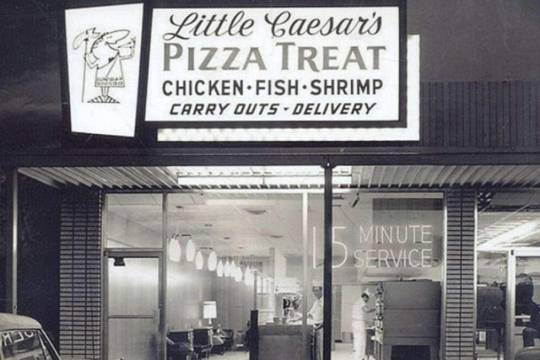
Mike Ilitch played second base for the Tigers and a couple of other teams beginning in 1952.....thanks to a knee injury, he had to retire in 1955.
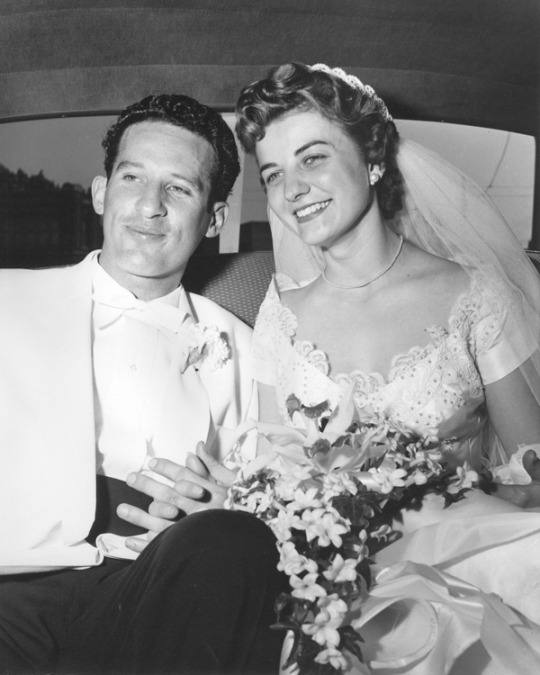
Little Caesars' history says it all began as a love story in 1954, when Ilitch and Marian Bayoff were thrown together on a blind date by Mike's dad. Fortunately, they hit it off, and it was just a few months later when they married. The two of them pooled their life savings in order to open their own business: a pizza restaurant.
1962 Little Caesars first franchise opened in Warren, called “Little Caesars Pizza Treat”. This featured the “Little Caesar guy eating a slice of pizza” logo. From there, Little Caesars really began to branch out and became the fastest-growing pizza chain in America.
That single mom-and-pop pizza shop grew into the third largest pizza chain in the world with stores in more than 27 countries and territories worldwide, including in each of the 50 U.S. states.
The growth of Little Caesars helped Mike and Marian create other leading brands in the food, sports and entertainment industries.
The couple purchased the Detroit Red Wings in 1982. While the team was known as the Dead Wings at the time, Mike and Marian believed they were a sleeping giant and immediately took charge to turn the team around. By 1997, the Red Wings won their first Stanley Cup in 42 years, and they went on to win three more.


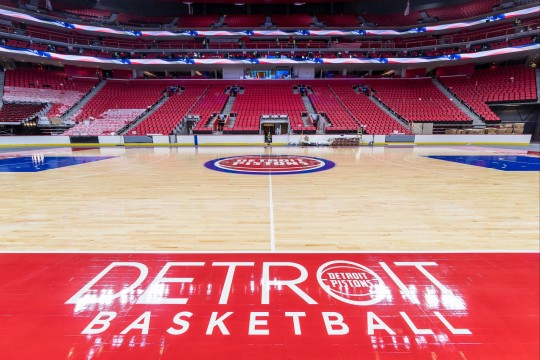
Mike encouraged the Ford family to bring the Detroit Lions back to Detroit from the suburbs and build a new stadium right next door to the ballpark by relinquishing a portion of land to make way for the new stadium. The new football venue allowed Detroit to host the Super Bowl in 2006.
Today - true to Mike and Marian's vision for a bustling downtown area - the Ilitch organization is developing The District Detroit, a dynamic urban destination that provides a dense neighborhood experience featuring a variety of developments alongside Detroit's premier sports and entertainment venues. This includes the new highly innovative and state-of-the-art Little Caesars Arena, home of the Detroit Red Wings and Detroit Pistons, and the recipient of the 2018 Sports Facility of the Year award, presented by Sports Business Journal.
Throughout Mike’s life, he remained true to his hometown and was a zealous supporter of Detroit, working tirelessly to help it prosper and to bring pride to the city. In 1988, Mike and Marian purchased the neglected Fox Theatre and carefully restored it to its original 1928 splendor.
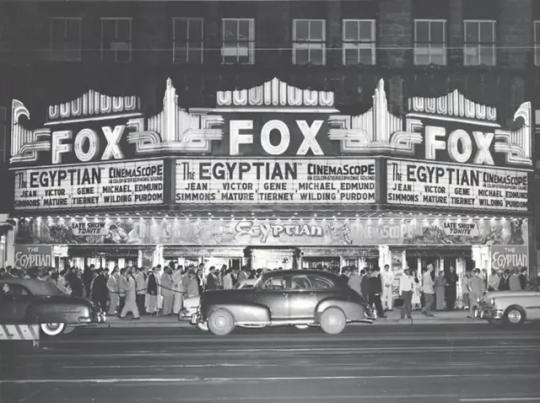


One year later, they moved the Little Caesars world headquarters from the suburbs into the newly renovated Fox Office Center adjacent to the restored theatre. This was during a time when many businesses were fleeing the city.
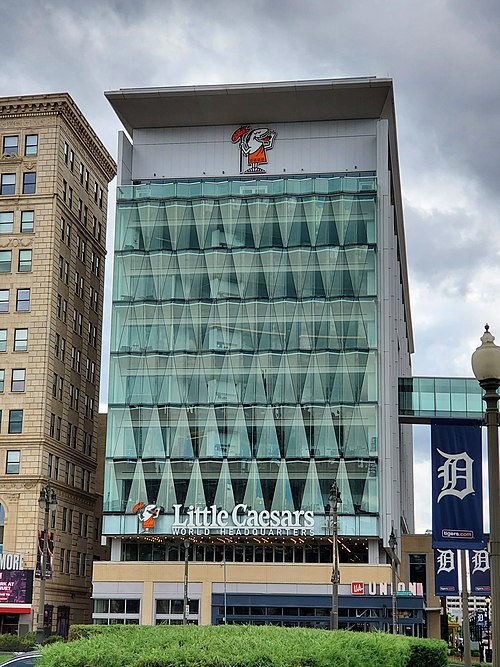
Mike displayed further commitment to the city he loved when he purchased the Detroit Tigers in 1992 and built a new state-of-the-art ballpark for the team. Remembering his early years as a minor league baseball player with the Tigers, he did everything in his power to make the fan experience at Comerica Park a memorable one.
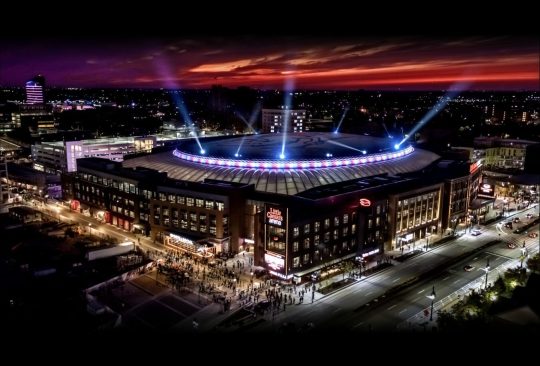
Mike and Marian believed passionately in giving back to the community. As the parents of children who played hockey, the couple wanted to provide other children the opportunity to play the sport as well. So, they established the Little Caesars Amateur Hockey Program in 1968, and it has provided opportunities for tens of thousands of youngsters to play the great game of hockey over the years. Hundreds have gone on to play at colleges, universities and in the National Hockey League.
Inspired by the story of a veteran returning to civilian life, Mike founded the Little Caesars Veterans Program in 2006. The program provides honorably discharged veterans with financial incentives and other support to help them open a Little Caesars franchise.
Since 2000, grants and giving from Marian and Mike, the Ilitch companies and its charitable affiliates have totaled $220 million. This includes Marian and Mike's personal gifts of nearly $50 million to Detroit's Wayne State University - $8 million to the Department of Surgery and $40 million to build a new home for the Mike Ilitch School of Business, prominently located on Woodward Avenue.
#michigan#detroit tigers#detroit red wings#pizza#nhl#mlb#comerica park#little ceasers#little ceasers arena#fox theater#detroit pistons
56 notes
·
View notes
Text
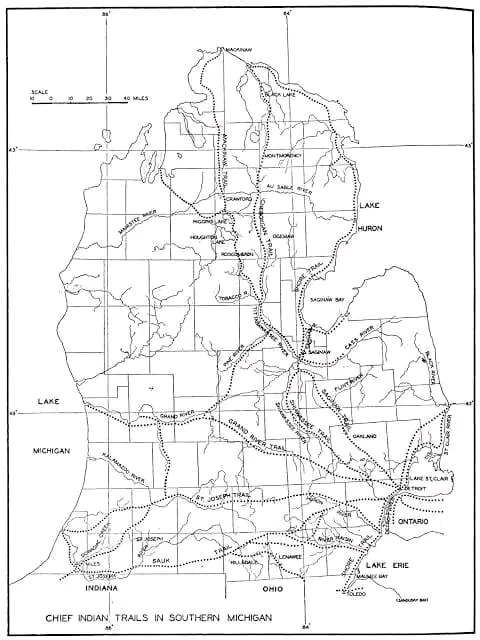
Michigan's first trails were not made by native Americans but ranging buffalo herds in migration. This was especially true on the St. Joseph trail in Southwest Michigan. The major trails in lower Michigan tended to link Indian settlements of Mackinac, Detroit, Saginaw, and Niles. The area around Saginaw had the most native American settlements in the Great Lakes region.
Noted below are native trails that we travel everyday.
Shore Line Trail - A minor trail starting near Toledo and hugging Lake Erie's shore, the Straits of Detroit. Past Fort Gratiot and Lake Huron to a spot near White Rock. White Rock was considered a solemn spiritual place of offering. Today this route is mirrored by Lakeshore Drive from Detroit to Lexington and M-25 north. This trail continues north along the entire shore to Cheboygan. It was considered a minor trail as travel via canoe was preferred along this route. Michigan chose to utilize much of the original Native American trail along Lake Huron and Saginaw Bay to create M-25. Paving of Michigan's First Scenic Highway was started in 1933 and completed in 1940.
Saginaw Trail - One of the oldest trails, this Sauk trail system, went from the Straits of Detroit to Saginaw. Today this starts at the Detroit River and heads northwest up Woodward Avenue to Pontiac, then continues up Dixie Highway through Flint to Saginaw.
Sand Ridge Indian Trail - An ancient trail from Saginaw to Port Austin in Michigan's Thumb. Used primarily for access to the rich hunting ground of the Thumb. Today, M-25 follows much of the same route. However, the old trail is still evident and marked as Sand Road in Huron County. A major canoe passage across Saginaw Bay occurred at Oak Point via Charity Island to reach the AuSable River.
St. Joseph's Trail - A major east-west system called Route du Sieur de la Salle and the Territorial Road. When the Territorial road was first built from Plymouth to St Joseph, a portion of the road was ‘corduroy.’ which means wood lo
25 notes
·
View notes
Text
1953 Candians vs Red Wings
5 notes
·
View notes
Text
Detroit May 2nd 1942

1940s were boom years of development. The decade was full of upheaval and change, as factories re-tooled to build war machines, and women started taking on men’s roles in the workplace, as men shipped overseas to fight in World War II.
The need for workers brought an influx of African-Americans from southern states to Detroit. They were met with stiff resistance from whites who refused to welcome them into their neighborhoods or work beside them on an assembly line.

Sparked by seemingly minor altercations amid aggressive white resistance to black labor flocking to the city’s factories during America’s ramped-up war effort, On June 20, 1943, a fight broke out between African American and white Detroiters spending their Sunday on Belle Isle, the city’s large park in the middle of the Detroit River. Fighting spread to the mainland, and rumors crisscrossed the city, stoking racial tensions that had been running high and threatening to boil over into violence for months. Rioting spread, with little attempt from the police to stop it (in fact, much evidence points to many white police facilitating and even participating in violence against African Americans)

What’s more, the street violence at home exposed how thin the veneer of “common purpose” truly was across some segments of society, even as Americans were fighting and dying overseas.
"The Packard Riot"
More then 20,000 white workers at a Detroit plant that produced engines for bombers and PT boats walked off the job in protest over the promotion of a small handful of black workers — a protest hardly emblematic of a nation seamlessly joining together to battle a common enemy.
Guarded by more than 1,500 state troops, city and state police, moving vans carried the household goods of black families into Sojourners Truth, a federal housing project located in a white section of Detroit, on April 29, 1942.

Protesters, whose previous attempts to prevent blacks from moving in riot before finally being dispersed by police.

Detroit police disperse white picketers who objected to occupancy by blacks of Sojourner Truth Federal housing project, erected in a predominately white neighborhood.

Stones flew despite a police riot squad’s efforts to maintain order in Detroit.
3 notes
·
View notes
Text

On December 8, 1942, Detroit architect Albert Kahn died at his home at the age of 73. Kahn and the firm bearing his name designed and built more than 2,000 buildings, mostly for Ford Motor Company and General Motors.
Born in Germany in 1869. Kahn and his family moved to the United States when he was 11 and settled in Detroit. As a teen, he got a job as an architect's apprentice. In 1902, after working at a number of architectural firms in Detroit, Kahn started his own company.
While building factories for Packard, Kahn and his brother, a structural engineer, found that using reinforced concrete instead of wood or masonry accelerated the construction of manufacturing plants significantly. It also made them sturdier and less prone to fires. Also, reinforced-concrete buildings needed fewer load-bearing walls, freeing up floor space for massive industrial equipment. Kahn's first concrete factory, Packard Shop No. 10, still stands today on East Grand Boulevard in Detroit.
Ford's Highland Park plant, built in 1909, was Kahn's first for Henry Ford. The factory used elevators and dumbwaiters to spread the Model T assembly line over several floors, but most of his later factories were huge one-story structures, including Ford's colossus, "The Rouge" (1916) and the half-mile-long Willow Run plant that built Ford's B-24 bombers in Ypsilanti.
Though Kahn designed a number of non-factory buildings, including the Ford and GM office towers in downtown Detroit, he is best known for building factories that reflected the needs of the industrial age. We still celebrate his innovations today. #ThisDayInAutoHeritage
https://www.facebook.com/motorcities?mibextid=rS40aB7S9Ucbxw6v
1 note
·
View note
Text
1953 Detroit Red Wings vs Montreal Canadian's
1 note
·
View note
Text
Pond of Dreams
Gordie Howe, Mario Lemuiex, Wayne Gretzky, Eric Lindros, Pavel Bure, Jaromir Jagr, Paul Kariya!
13 notes
·
View notes
Text
Once upon a time in Metro Detroit…
Carl Thom opened the first Harmony House music store in Hazel Park in 1948.
Known for its superb selection of Detroit music, the chain grew to 38 stores before finally closing all but two stores in 2002.

1 note
·
View note
Text
3 notes
·
View notes
Text

Three former members of the Red Wings Organization are inducted into the International Ice Hockey (IIHF) Hall of Fame in Toronto, Ca 2023
2 notes
·
View notes
Text
Hupp Motor Car Co., was organized, on Nov. 8, 1908.

Robert (Bobby) Hupp is generally credited with developing and introducing the hydraulic brake as standard equipment on cars, and he was also an early advocate of the "eight-in-line" engines. Moreover, in an era that saw some 200 car companies founded only to quickly flounder, Hupp was a survivor in a crowded and competitive field, producing cars for more than 30 years, until 1940.

Hupp Motor Car moved into this plant on East Milwaukee at Mt. Elliott, the company’s third home, in March 1912. The factory eventually encompassed a total of 1.6 million square feet. It was demolished in 1980-81 for GM's Poletown Plant.





2 notes
·
View notes
Text
6 notes
·
View notes
Text
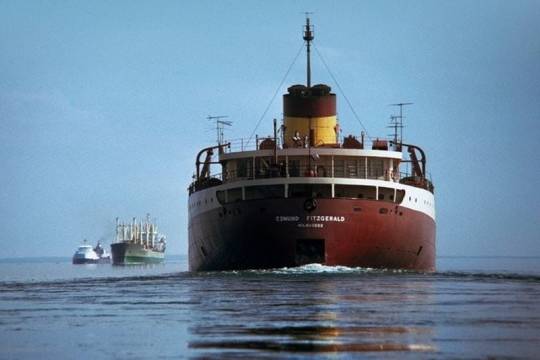
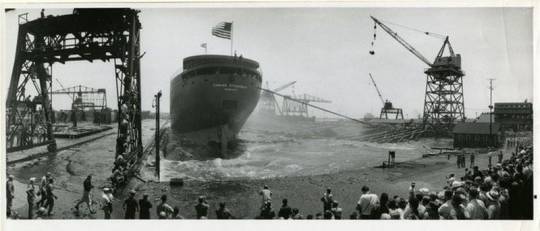
The SS Edmund Fitzgerald launch at Great Lakes Engineering Works on June 7, 1958. (Courtesy | Detroit Historical Society)
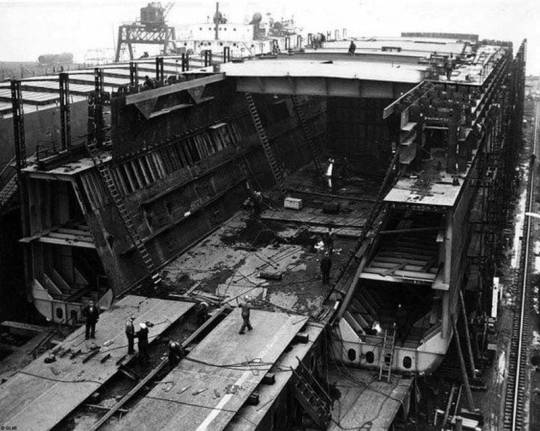
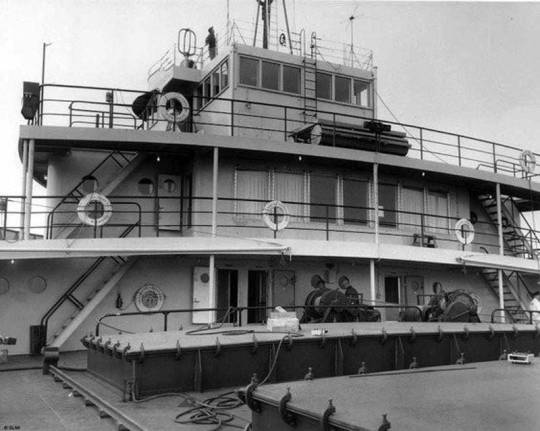
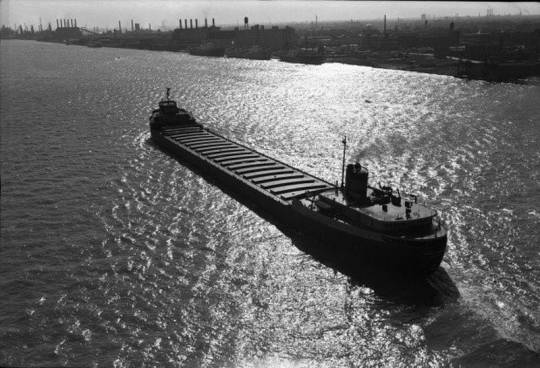
SS Edmund Fitzgerald seen from the Ambassador Bridge. The vessel is underway (downbound) on the Detroit River in 1960. (Courtesy | Detroit Historical Society)
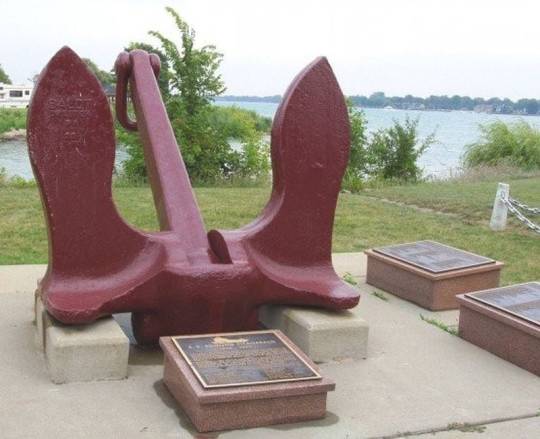
The Edmund Fitzgerald lost her original bow anchor in the Detroit River in 1974. The anchor was later raised and put on display at the Dossin Great Lakes Museum in Detroit. (Courtesy | Detroit Historical Society).
41 notes
·
View notes
Text
October 16th 1946
The 18 year old Gordie Howe makes his NHL debut with the Detroit Red Wings

Signed by the Red Wings in 1944 at 16 years of age. Gordie, a native of Floral, Saskatchewan, played right winger the Gault Red Wings, an OHL junior team


18 notes
·
View notes
Text
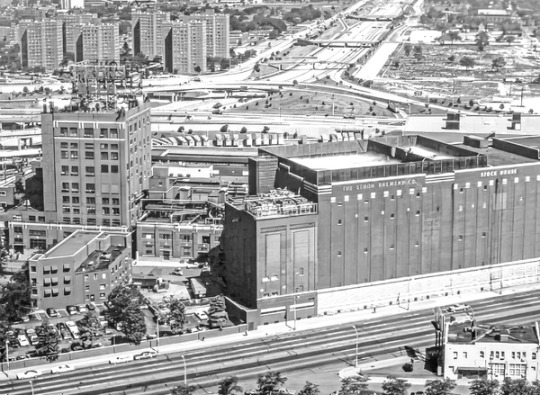
Strohs Brewery 991 Gratiot Ave
Stroh Brewing Company started with Johann Peter Stroh in 1775 in Kirn, Germany. Johann and his family lived in a house with an adjoining brew house attached, and ran a local inn that served meals and their family’s recipe for Bohemian-style Pilsner Ale. Johann had three sons and one daughter. His second son, Georg Freidrich Stroh, inherited the brew house. Georg’s youngest son was
Johann Bernhard Stroh (known to the world as Bernhard), who was born in 1821. On February 22, 1848, revolutions erupted across Europe. With all the turbulent violence surrounding Europe in the mid-19th century, and with his father Johann’s death and his elder brother Georg inheriting the family business, a 27 year old Bernhard Stroh, who had learned the brewing trade, immigrated to the United States.
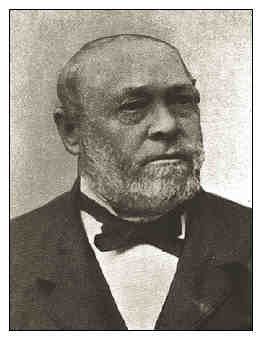
Bernhard Stroh arrived in the United States in 1850. He immediately started his own business. Stroh opened a brewery at 57 Catherine Street…He developed a market for a new light lager beer among the larger German immigrant population, and names his new company Lion’s Head Brewery, adopting the Lion’s Crest logo from Kyrburg Castle in Kirn, Germany.
The company uses this same crest as their logo to this day. With only an investment of $150 (in 2016 dollars, this would amount to $4,409.53) that he provided himself through working for the family inn back in Germany, Stroh had to be very frugal in his spending. By 1860, Stroh’s customers had a desire for Stroh to start bottling his famous beer so they could enjoy the Bohemian-style Pilsner Ale at their homes.
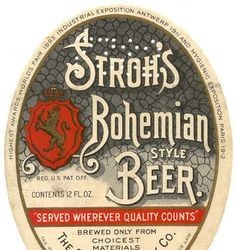
Bernhard Stroh would have his sons personally cart small kegs of beer to his customer’s homes and business by wheelbarrow.
Stroh’s would not only become Detroit’s largest brewer, but the third largest in the country.
This massive, million-square-foot factory at Gratiot near I-75 grew as the company did, with buildings dating from the 1860s to 1914. In late 1890, the firm Spier & Rohns was hired to make extensive additions and improvements to the Stroh campus, including building a 25-foot-by-70-foot fireproof stockhouse, a 60-foot-by-100-foot bottling works, and a new ice-machine plant. These additions made the brewery the largest in Michigan and formed some of the most visible parts of the plant.
By 1956, the Detroit brewery was pumping out 2.7 million barrels of beer — 83.7 million gallons.
he 1970s and 1980s were very productive years for the Stroh’s; sales continued to increase with the acquisition of Goebel’s, new leadership came in 1967 with John Stroh becoming CEO and Peter Stroh, Gari Stroh’s son, became President. The duo expanded the company to its greatest height throughout the two decades with new marketing and aggressive advertising strategies. With increased sales, the Stroh brewing company was able to match the big three car companies in terms of salaries and benefits. Early in the 1980’s, Peter Stroh started looking to take Stroh’s to the national stage, and made a bid on the Schaeffer Brewing Company and Schlitz Brewing Company. Schaeffer started to go into debt in the late 1970s and early ’80s, making the buyout from Stroh’s all too easy in 1981. Schlitz accepted a buyout offer of $17 a share. Schlitz became a wholly owned subsidiary of the Stroh Brewing Company, making Stroh the third-largest brewery in the United States. With all this expansion, Peter Stroh, now CEO at this time, realized his company was overextended. By 1985, Peter Stroh recognized his company was operating with excess capacity, On Feb. 8, 1985, Stroh’s announced it was closing its Detroit facility, calling it too costly to run and too inefficient compared with newer facilities it had acquired. The plant was shuttered that May, bringing an end to 135 years of tradition and costing 1,159 Detroiters their jobs.
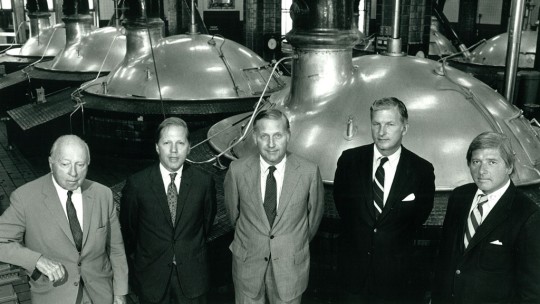
The factory was imploded in two phases -- on April 13, 1986, and July 13, 1986 -- with the land soon redeveloped as Brewery Park.
In 1999, the struggling company was imploded, too, split up and sold to Miller Brewing and Pabst.
2 notes
·
View notes